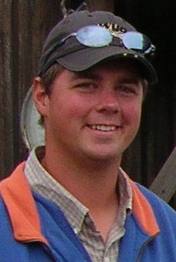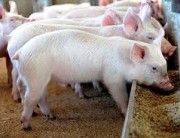In his blog (weedcontrolfreaks.com), Andrew Kniss professes to know more about statistics than the authors of the paper, even though between them, two of the authors of the paper have 45 years experience in using and teaching statistics at a university level. They have expertise in agricultural, toxicological, medical and epidemiological statistics.
Author: GMO Judy Carman Website Editors
In comparison, Andrew makes several fundamental mistakes. For example, he claims that the pigs were fed for 2 years, when the paper makes it clear in several places that the pigs were fed for only 5 months.
When criticising uterine weight data, Andrew also says: “Table 2 doesn’t list the units for any of the numbers, so I don’t know if the weights are in grams, kilograms, ounces, metric tons… ” Not only are some of his suggested units bizzare, he has made a fundamental mathematical and statistical mistake here. As is clearly shown in the caption to the table in question, the uterine weights are expressed as a percentage of body weight. Therefore the weights are expressed as a ratio and such data do not have units. Which is why no units were given.
Andrew Kniss describes himself on his blog as a plant scientist. It is clear from this and other comments that he has made that he has little to no knowledge of medical research and the statistics used with it. But that doesn”t stop him proposing statistical methods that are not appropriate to this or any other data. For example, he acknowledges that the stomach data are categorical in nature. But he then suggests using statistical tests that should never be used on categorical data, such as a t-test. In order to do that, he had tried to change categorical data into continuous data so that he can apply statistics that are only applicable to continuous data. Categorical data are data that fit into categories, such as male / female or pregnant / not pregnant. He has tried to turn this sort of data into data that is continuous, like you get with body weight or height. This is really bad statistical methodology. It is like taking pregnant / not pregnant data and trying to twist that data into groups that could be described as: pregnant, half pregnant and fully pregnant. And you are right, it doesn’t make sense to even try to do something like that.
And then, once he has “succeeded” in turning the data into continuous data, the next step he should have done was to test the data to see if it is normally distributed or not, because different statistical tests are used on normally distributed data compared to data that are not normally distributed. But he hasn’t even done that. He just did both statistical tests – one for normally distributed data and one for non-normally distributed data, and just reported both results.
Andrew, you just failed kindergarten-level statistics.
In fact, the standard and appropriate statistical method that should be used with these sort of medical / toxicological data is the one that the authors used. It is called a “relative risk” and it is calculated using a 2×2 table. This method takes into account the baseline risk of a condition or disease in the non-exposed group and calculates the extra risk of getting it in the exposed group. Andrew”s proposed method does not do that. And while Andrew may not be aware of this statistical method, it is not hard for him to get information about it. It is even available on Wikipedia.






















Can you provide the raw data? That would help to clarify a lot of the issues.
Thank you for your reply to the criticisms of your published study on pigs. I hope many more scientists like you will stand up and educate the public and our elected leaders.
Thierry Vrain